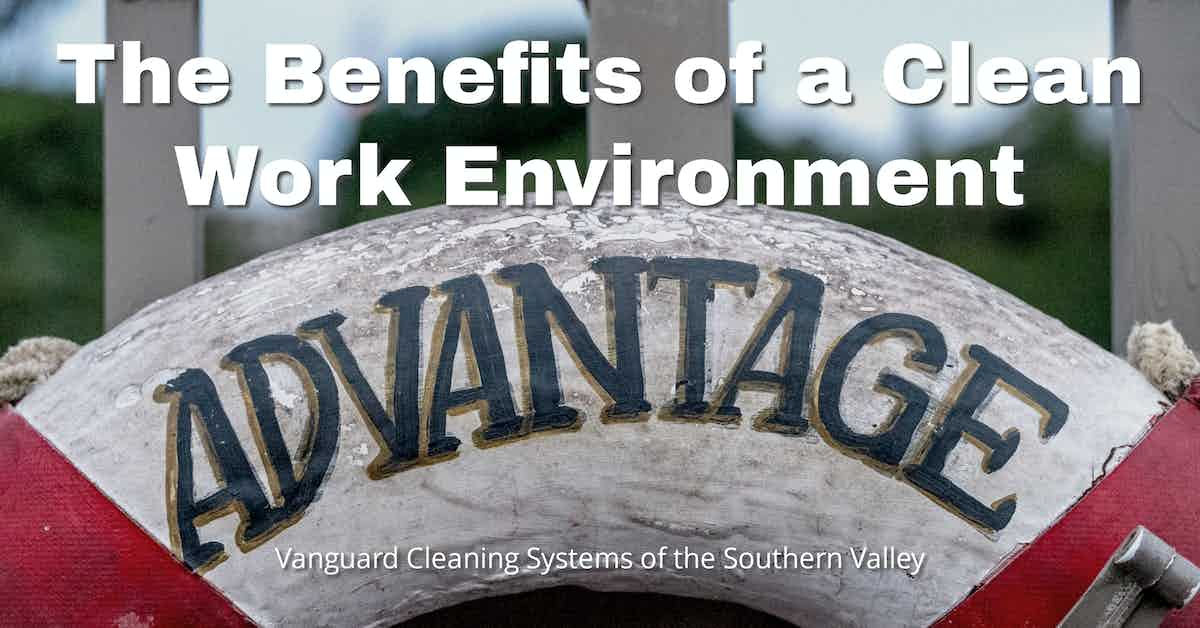Several studies have established a strong correlation between environmental cleanliness and workplace stress, concluding that the cleaner the workspace, the happier and more productive the employee.

The Relationship Between Workplace Cleanliness and Mental Health
Research suggests that, on average, U.S. workers will spend approximately 90 thousand hours in the workplace, translating to roughly one-third of their lives.
That statistic highlights the profound impact office cleanliness has on occupants' physical and mental health.
Cluttered work environments increase mental strain, resulting in increased stress levels, negatively impacting health and potentially contributing to chronic illness.
Additionally, poorly sanitized workspaces harbor germs and bacteria, resulting in further illness, reduced occupant cognitive functions, poor work performance, and increased healthcare costs.
According to Thrive;
Cluttered spaces [...] have negative effects on our stress and anxiety levels, to be sure, but also on our ability to focus, our quality of sleep and even our eating choices.
Workplace stress costs American businesses up to $190 billion each year in health care costs alone.
Many studies have shown that stress raises our risk of cancer, allergies, heart disease, and susceptibility to colds and flu.
Stress can also sap your energy, cause fatigue, and increase negative thoughts that contribute to anxious feelings.
When you can’t readily get tasks done due to clutter and uncleanliness in your workspace, you feel helpless, unproductive, and stressed that you couldn’t get all your tasks done in the timeframe you wanted.
Then, you have to stay late or cram in more the next day, adding to your stress levels.
Worker Demand for Cleaner Environments
After years of COVID-driven lockdowns, office worker stress levels remain high.
A primary condition for many workers to confidently return and remain in the workplace is increased visible cleaning and disinfection efforts.
According to the results of a survey conducted by the Cleaning Coalition of America:
- 43% of respondents are still worried about returning to the office.
- 66% of U.S. workers consider office cleaning practices extremely important.
- 62% stated that simply seeing sanitation professionals regularly at their workplaces would make them feel safer.
- 89.9% believe workplace cleaning protocols are very or somewhat important, and;
- 38.3% felt that improper cleaning at their workplace might spur a job change.
Source:
Intervention Strategies to Reduce Workplace Stress and Illness Through Enhanced Cleaning
Regular cleaning:
- Eliminates clutter.
- Removes germs and bacteria from occupied spaces.
- Decreases the instance of occupant illness and absenteeism.
- Reduces healthcare costs.
- Lowers occupant stress levels, and;
- Improves occupant health and performance.
Recommended intervention strategies include:
- Cleaning at least once per day--more during localized outbreaks or as a prevention strategy during cold and flu season.
- Microfiber-based tools, including towels, mops, and brooms.
- Vacuuming at least once daily (more in high-traffic or high-risk areas with a HEPA-filtered commercial-grade vacuum.
- Targeted touchpoint disinfection methods throughout the day.
- Cleaning, then disinfecting high-risk areas, such as restrooms, where food is served or prepared, and spaces that house at-risk demographics (elderly, immuno-compromise, and very young), at least daily.
- Using VOC-Free, Green Seal Certified, or Safer Choice disinfectants.
- Increasing airflow through natural or mechanical means.
- Deploying commercial-grade air purifiers in spaces with strict environmental controls that do not allow for increased natural or mechanical ventilation.
- Increasing occupant handwashing compliance through improved access, communication, and training, and;
- Cross-contamination prevention methods, such as color-coded microfiber and the two-bucket cleaning method.
Takeaway
There is a strong correlation between workplace cleanliness, occupant stress levels, workforce productivity, and corporate profits.
In general, the cleaner the workspace, the healthier and more productive the workforce.
However, as with any scientific process, commercial facility cleaning and disinfection methods must be developed, implemented, tested, and corrected to ensure maximum efficacy.
Many commercial disinfectant products can be deadly, and not all cleaning products are safe for use on all surfaces--underscoring the need for intensive management and service provider training.
Onboarding the requisite material and labor resources necessary to achieve the highest standards of cleanliness and safety may prove cost-prohibitive to many organizations.
Outsourcing is a proven method for onboarding highly in-demand cleaning and disinfection services and experience for a fraction of the price of maintaining a similar service in-house.
If you would like more information regarding the effectiveness of high-performance infection prevention and control measures, or if you would like to schedule a free, no-obligation on-site assessment of your facility's custodial needs, contact us today for a free quote!
In Bakersfield, CA, call (661) 437-3253
In Fresno, CA, call (559) 206-1059
In Valencia, CA, or Santa Clarita, CA, call (661) 437-3253
In Palmdale, CA, or Lancaster, CA, call (661) 371-4756

